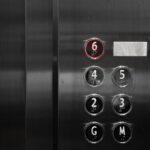Electric traction elevators are everyday heroes working quietly in the background to make our lives easier. They carry us smoothly between floors, ensuring safety and convenience in both residential and commercial buildings. But like any machine, they can start acting up now and then. When these trusty transports begin to have hiccups, understanding why can help keep them running more efficiently and reliably.
Keeping these elevators in good working order isn’t just about avoiding inconvenience; it’s also about safety. Residents and workers rely on these systems daily, making their upkeep a priority. Whether it’s a sudden halt or peculiar noises, getting to the root of these issues allows for a quicker fix and helps in planning preventative measures. Let’s explore some of the common problems these elevators face and how to tackle them effectively.
Common Traction Elevator Problems and Their Causes
Although they are generally reliable, electric traction elevators can encounter issues. Here are some common ones:
– Jerky Movements: Feeling a jolt or sudden stop during a ride might indicate a problem. This can be quite unsettling for passengers and usually points to issues with the elevator’s power supply or control systems.
– Abnormal Noises: Strange or loud noises can be a sign of mechanical trouble. These noises often happen due to worn-down parts or lack of lubrication. Over time, regular use causes parts to age and degrade, leading to these unwanted sounds.
– Doors Not Closing Properly: This can not only delay a ride but also pose safety concerns. Misalignments or obstructions in the tracks often cause this problem, and it’s something that needs immediate attention.
These problems often stem from mechanical wear and tear, electrical faults, or issues with door alignment. Understanding these causes sets the stage for resolving them. Machines that work all day are bound to experience some fatigue. For instance, just like how a car needs regular oil changes to run smoothly, elevators require routine check-ups to prevent these problems from escalating.
Steps for Troubleshooting
Addressing these problems efficiently starts with a simple checklist. Here are some initial steps before going into deeper repairs:
1. Check Power Supply: Make sure there aren’t any issues with power or the circuit breaker.
2. Inspect for Physical Obstructions: Clear any items obstructing the doors or creating issues for the moving parts.
3. Listen and Observe: Pay attention to any unusual sounds or movements. This can offer clues about what might be wrong.
While these simple checks can sometimes resolve the problem, safety is non-negotiable. Never compromise on using the right tools and following safety practices like turning off the power before investigating further. For example, just as you wouldn’t try to fix a computer without shutting it down, an elevator should not be tampered with while operational. Remember, when situations become complex or beyond these initial steps, it’s best to call in the experts to avoid further complications.
When to Call a Professional
Sometimes, the problems an elevator faces go beyond what a simple checklist can solve. At certain points, you need to call in the pros. Here are some instances where help from an expert is a smart move:
– Repeated Odd Noises: If those clunks and rattles persist despite regular maintenance efforts, it’s time to bring in someone who can diagnose the deeper issues.
– Frequent Breakdowns: When the elevator frequently stalls or fails to operate smooth rides, a professional can perform a thorough inspection to identify any hidden or tricky issues.
– Power Supply Concerns: Electrical problems can be hazardous. If there’s flickering or dimming lights in the cabin, or any signs of electrical surges, it’s best to let professionals handle it.
Trying to fix complex mechanical or electrical issues without experience can make matters worse. Just as you wouldn’t try to repair your home’s wiring without proper knowledge, leaving intricate aspects of elevator repair to trained technicians ensures safety and efficiency.
Preventive Measures and Regular Maintenance
Simple preventive measures can keep your elevator running for the long haul. Start by having regular inspections. Schedule routine checks to catch small problems before they escalate. Just as routine medical check-ups are pivotal for good health, regular evaluations help prevent significant issues down the line.
1. Keep it Clean: Dust and debris can hinder smooth operations. Regular cleaning of tracks and other accessible parts is a good practice.
2. Timely Lubrication: Ensure the elevator’s moving parts are well-lubricated to reduce wear and tear.
3. Check for Alignment: Regularly ensure that doors and other components operate in precise alignment to mitigate unnecessary strain.
By consistently following a maintenance schedule, you help reduce the risk of major problems cropping up unexpectedly. This not only saves on potential repair costs but also boosts the elevator’s reliability, ensuring it’s always ready when someone needs it.
Ensuring Long-Term Elevator Health
Maintaining an elevator isn’t just about fixing issues when they arise. It’s ensuring the system stays robust over the years. Beyond regular checks, consider investing in quality parts and periodic updates. Just like refreshing a computer’s software keeps it running smoothly, updating elevator systems can enhance performance and extend its lifespan.
A reliable elevator system streamlines building operations, providing a seamless experience for users. Ensuring the health of your traction elevator is a commitment to safety and convenience every day. By prioritizing regular upkeep, you’ll benefit from fewer disruptions and a trustworthy transportation solution for all building occupants.
For anyone navigating the challenges of maintaining traction elevators, consider seeking out professional guidance to ensure these machines stay in peak condition. Whether it’s tackling stubborn problems or finding efficient upgrade solutions, having expert support can make all the difference in maintaining top-notch elevator health for years to come.
For more information on keeping your building’s elevators running smoothly, trust Kaiser Elevators for expert maintenance and support. Learn more about electric traction elevators and ensure reliable performance with professional service.

